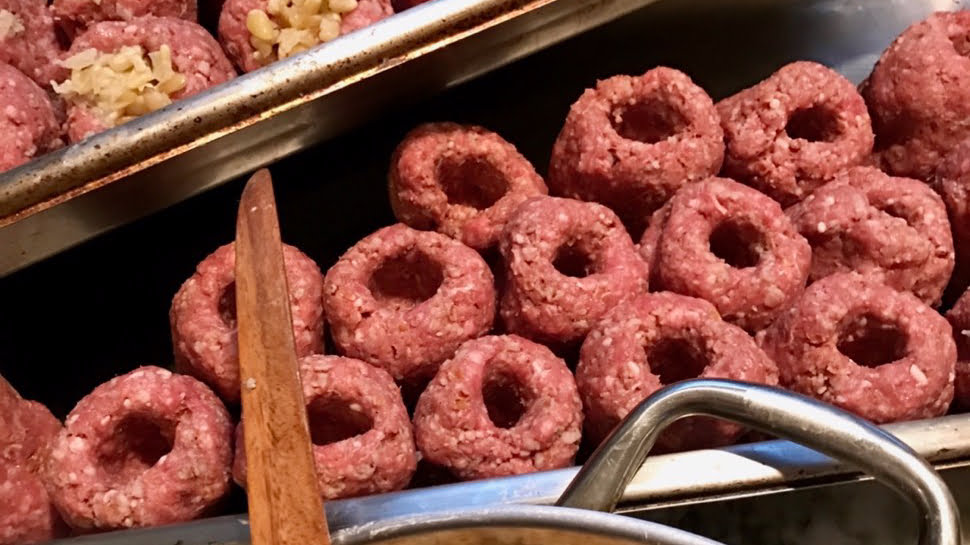Excited to have shared my mother’s Traditional Middle Eastern Kibbeh Recipe on TV and the stories that accompany this family recipe and its flavors.
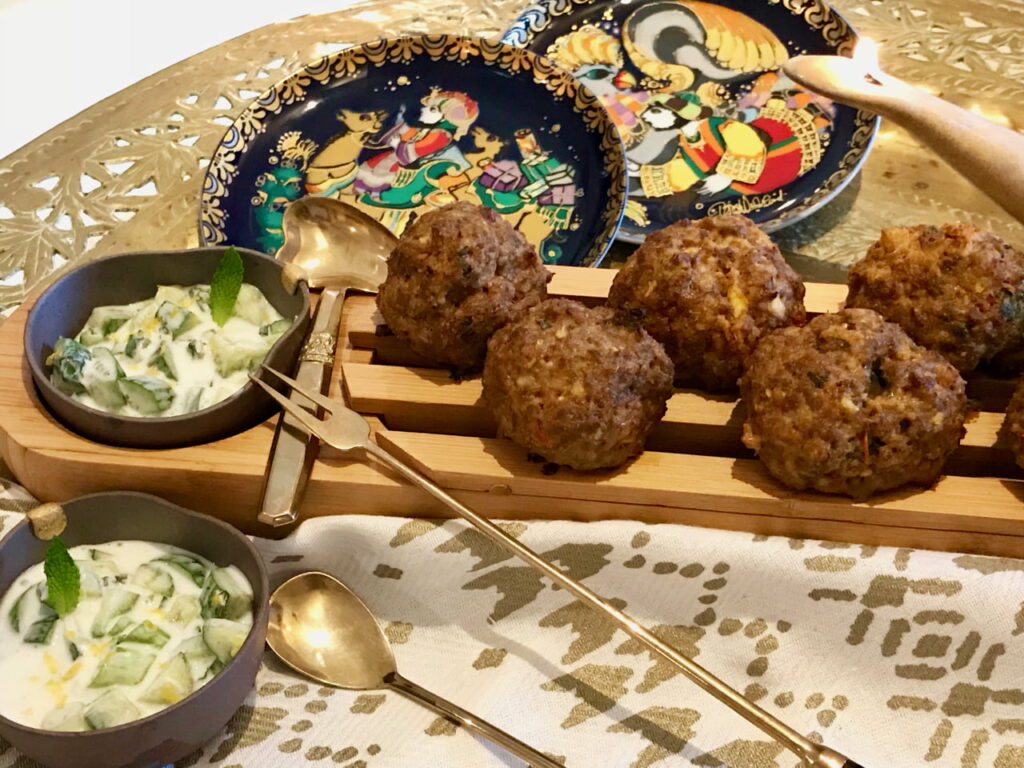
What Is Kibbeh?
Simply put, Kibbeh is a traditional Middle Eastern dish that is uniquely created with ground meat and bulgur wheat.
While the word kibbeh means ‘to form into a ball’, I have seen kibbeh served in a variety of ways, other than simply a ball.
Everything from fried to a crunchy crust, to a lovely layered and baked version, cut into diamond shapes.
Kibbeh: The National Dish Of Lebanon Syria Armenia and Turkey
In days of old, like biblical times, lamb and goat was the dominant meat eaten.
An electric meat grinder did not exist.
Meat was finely chopped ‘minced meat’, in a variety of angles causing the meat to appear minced.
Bulgur wheat would be soaked for hours until it swelled and became soft.
The two are then blended together with a variety of herbs and Middle Eastern spices.
The mixture is then kneaded, just like bread, until the meat and wheat mixture becomes almost a paste, in texture.
This texture is what sets Middle Eastern meatballs apart from most other meatballs.
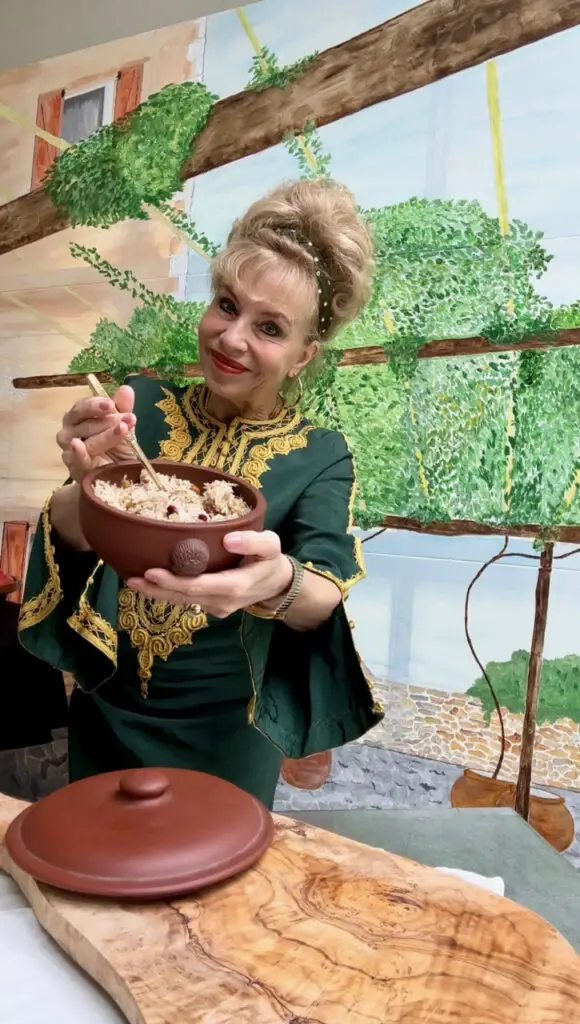
Meatballs
Did you know that nearly every cuisine around the world has some type of meatball?
Well, in Syria and Lebanon the traditional meatball is KIBBEH.
The common thread between most meatballs is that they have some sort of grain, or filler in them.
What I love about Kibbeh is that the filler is actually the pure wheat itself, Bulgur Wheat.
It gets soaked overnight in water until it puffs up and is ready to incorporate into a recipe.
But, what I love about that process is that more flavor can be enhanced into the recipe, by adding flavor to the water in which the bulgur wheat is going to be soaked in.
Traditional Middle Eastern Kibbeh Recipe
While just about any meat or seafood can be ground and mixed with other ingredients, then made into balls to steam, fry, bake or sauté.
There are even some great kibbeh recipes for vegetarian kibbeh.
However, lamb meatballs are what I grew up eating, and so I would like to share with you my family’s recipe.
The flavor is rich and the texture is moist, simply because lamb meat has just the right amount of fat.
Kibbeh Nayyeh Or Lamb Tartare
Raw meat? Yep!
Raw meat, at one time, was considered a delicacy.
There is beef tartare out of France and Kibbeh Nayyeh out of the Middle East.
I grew up eating raw kibbeh and never got sick.
No way, you’d catch me eating it now.
I don’t know what has changed over time but it’s just not worth the risk to pick up food borne pathogens.
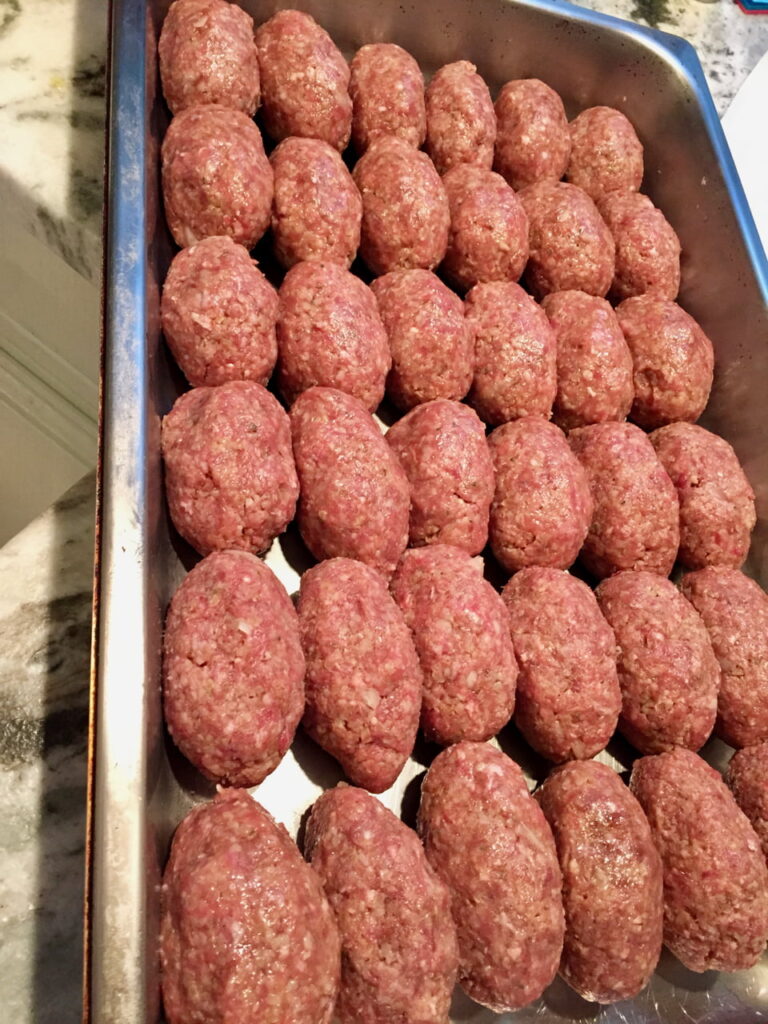
Ways In Which Middle Eastern Kibbeh Is Traditionally Served
As long as I can remember, kibbeh has always been served with yogurt, actually I have always eaten a yogurt dish with meat ever since I was a kid.
Maybe the probiotics in the ‘real’ yogurt I ate growing up saved me from getting sick with raw meat.
In ancient times, there were no refrigerators.
Meat could easily cause tummy troubles if it was not cooked soon after killing.
Yogurt played a big part in Middle Eastern cuisine at keeping the tummy in good shape.
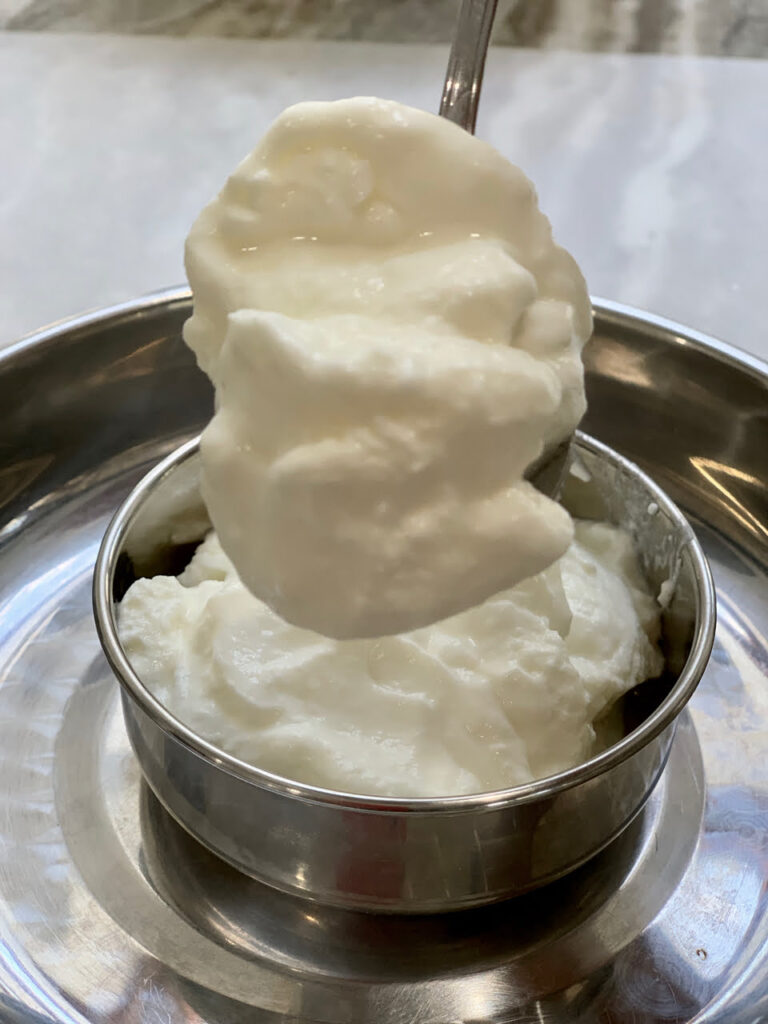
Why? Bacteria. The good bacteria naturally fermented into homemade yogurt was a kind of natural medicine for the tummy.
To this day, I still serve a tzatziki sauce with my kibbeh.
The mint leaves and cucumber in the tzatziki sauce make for a lovely balance of flavors and textures when enjoying a dinner with kibbeh or even part of a mezze spread.
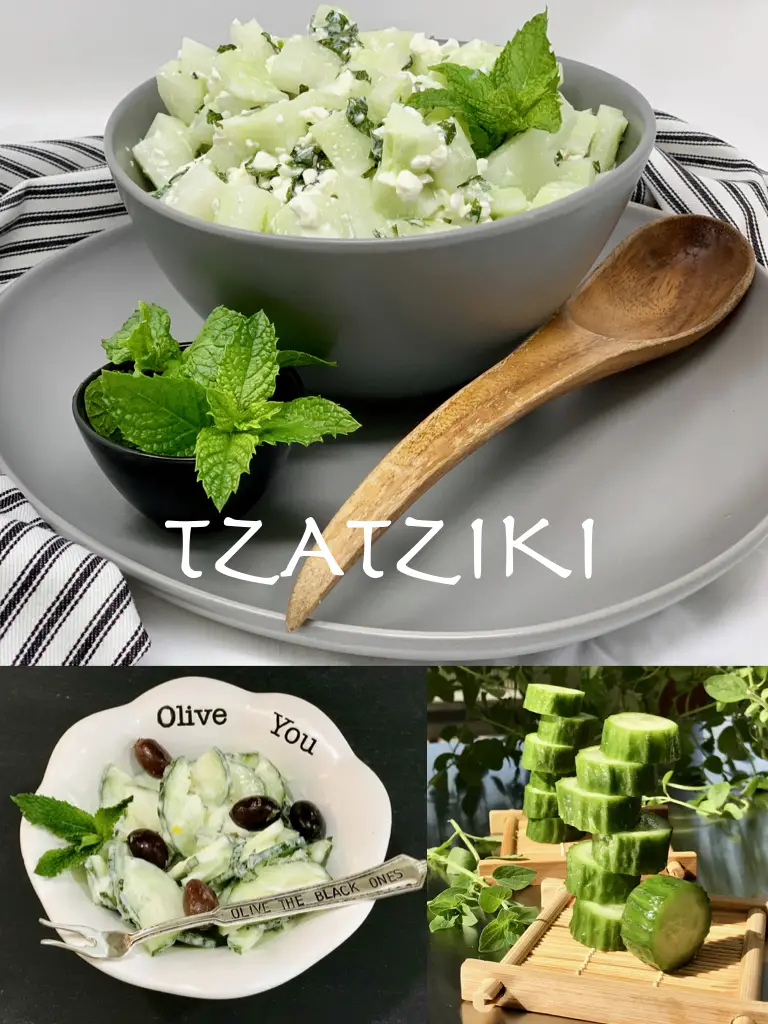
My Traditional Middle Eastern Family
What makes cooking special in each of our families is the memories it invokes as we look back on the times our family would cook together.
Kibbeh always carries those memories for me because something special happened when we made kibbeh.
While most Middle Eastern recipes are labor intensive, they also provide for wonder talk time with the family.
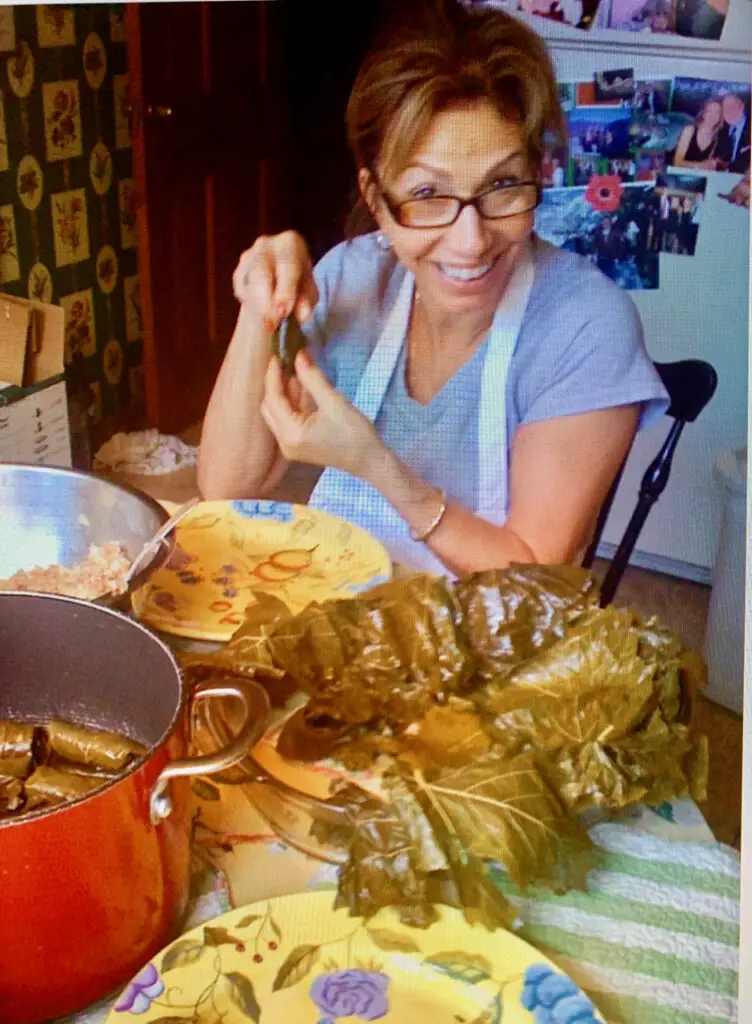
Some of my fondest memories of my childhood, are those times when my sisters and I would gather around the table with our mom, each of us with a plate in front of us, and a large bowl of something were were cooking in the center of the table.
Sometimes it was stuffing Grape Leaves, sometimes it was stuffing peppers with a rice and meat filling, and often times it was making kibbeh.
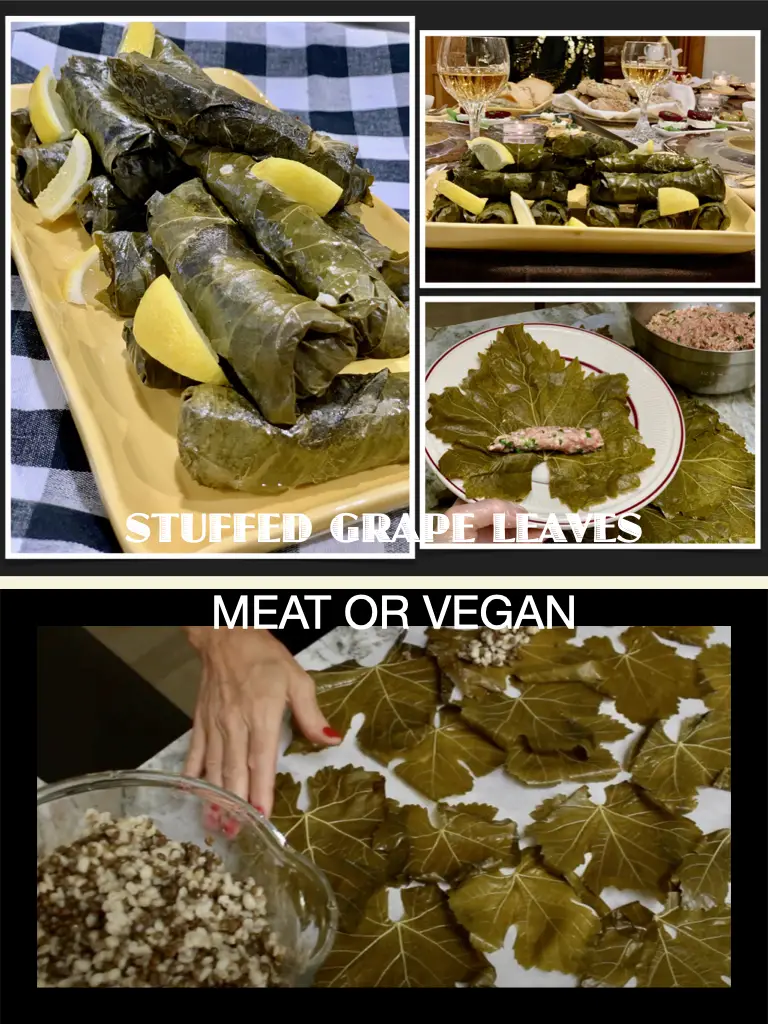
It was always the perfect time to be together, talk about everything and make time stand still while we were making memories I now cherish deeply.
Nothing brings a family, of multiple ages, together and enjoy simple laughter and storytelling quite like cooking a meal that is tedious to assemble.

Favorite Dishes To Serve With Kibbeh
It’s funny how, when given the opportunity to prepare a traditional family recipe, we suddenly want to prepare them all, and serve them together.
In many ways, that is what a traditional Middle Eastern meze is; a spread of many small plates of favorite recipes.
And so let me just tell you what I did prepare to serve with kibbeh for a special gathering at my home.
- Spinach Pies – Healthy Spanakopita Spinach Pastry Recipe, made with olive oil, instead of butter, makes this fresh spinach, lemon and feta phyllo pastry, healthier.
- Pita Flatbread – Easy Homemade Mediterranean Pita Bread Recipe, with fresh herbs or dried spices, are a favorite with sandwiches, dips or tapas spreads!
- Cilbir – Perfectly Poached Turkish Eggs Over Garlicky Yogurt, with Aleppo pepper flakes and your best olive oil.
- Baklawa – Add to that, buttery phyllo pastry and exotically scented nut mixtures, and you’ve got the BEST dessert the ancient world gave to us today!
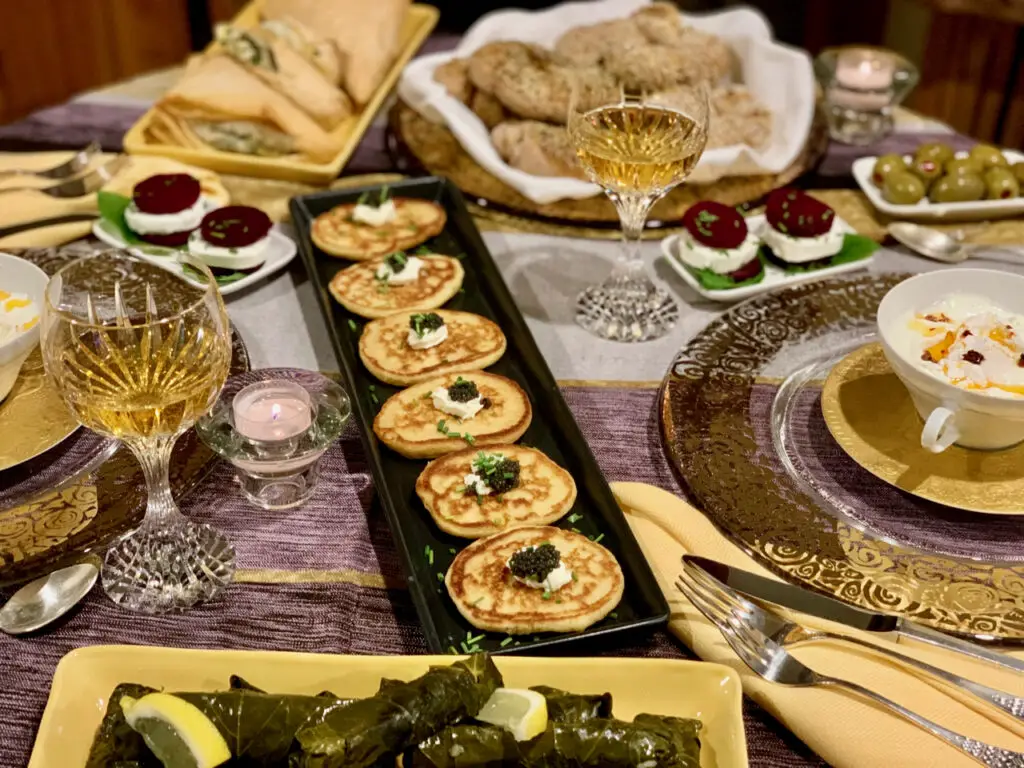
How To Make Kibbeh – Stuffed Lamb Balls
There are two steps to prepare the kibbeh and two steps to cook the stuffed lamb meatballs:
- The stuffing is sautéed in olive oil and set aside to cool.
- Kibbeh ingredients are assembled and then kneaded, much like bread dough before stuffing the meatballs and shaping them.
- On a hot pan, the meatballs are quick seared to seal in the juices.
- After a quick sear the meatballs go into the oven to finish roasting until cooked.
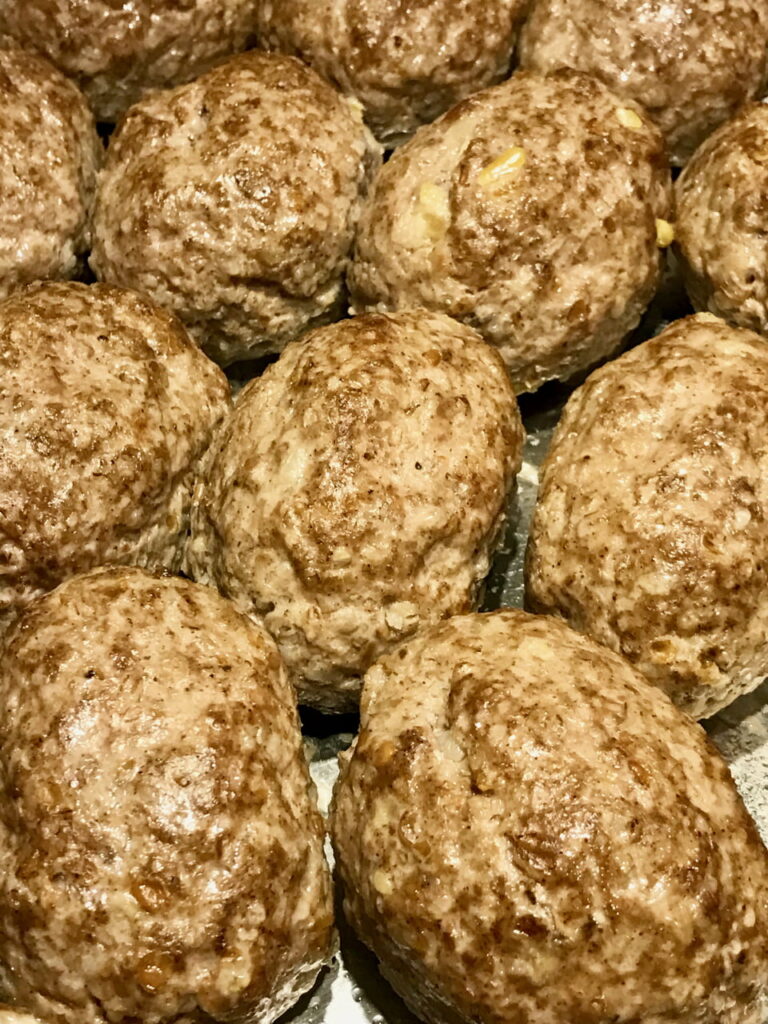
Making Kibbeh For National Television
What was I thinking? As tedious as it is to make kibbeh, I had the opportunity to make my family’s traditional Middle Eastern kibbeh recipe on national television.
On The Great American Recipe, with PBS, Season 1 Episode 5, I made a family style spread of kibbeh with tzatziki (cucumber and yogurt sauce), to serve with it.
If that wasn’t enough, I also made Rosemary bread, all in 90-minutes! What was I thinking?
I will always be grateful for this beautiful moment to tell stories of my heritage, as did the other contestants on the show, and serve family traditions to the judges on national television.

Ingredients Needed
- Ground lamb
- Bulgur wheat
- Cinnamon
- Salt
- Marjoram
- Lemon juice
- Garlic
- Water
- Onion
- Pine nuts
- Butter
Equipment Needed
- Large baking pan
- Large mixing bowl
- Medium mixing bowl
- Wooden spoon
- Citrus zester
- Garlic press
- Saute pan
- Cutting board
- Chopping knife
- Small spoon – for filling
- Stovetop
- Oven
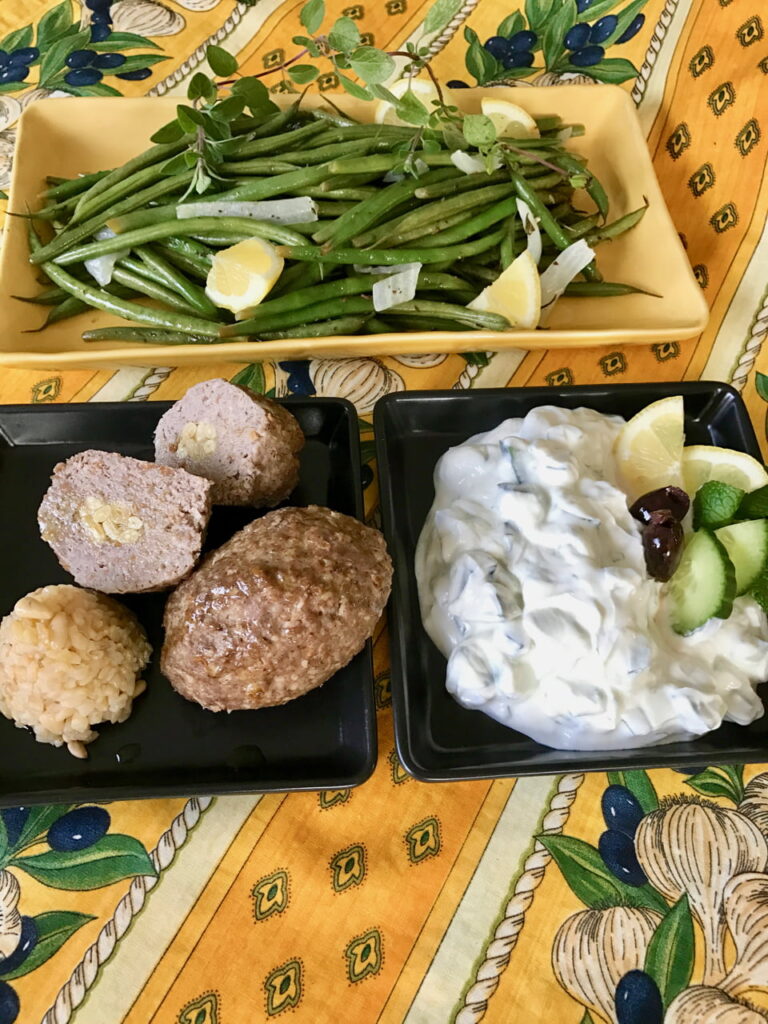
Traditional Middle Eastern Kibbeh Recipe
Equipment
- Large saute pan
- Baking sheet pan
Ingredients
- 2 lb Ground lamb . or ground beef
- 1 1/2 cups Fine Bulgur wheat also called cracked wheat
- 2 tsp Cinnamon
- 2 1/2 tsp Salt
- 1 tsp Marjoram
- 1 tsp Black cumin Nigella seed powder
- 1 tbsp Lemon juice
- 2 Garlic cloves crushed
- Cold water enough to cover the wheat
- 4 tbsp Butter
- 1 Large onion finely grated
- Filling Ingredients
- 1 Large Onion minced
- 8 oz Pine nuts
- 1 tsp Cinnamon
- 1/2 tsp Salt
- 1/4 cup Olive oil extra for cooking
Instructions
- Place the wheat, lemon juice, crushed garlic, and a pinch of salt into a large bowl and cover with water. Cover the bowl and let it sit room temperature, overnight.
- Drain off excess liquid from the bulgur mixture and squeeze out excess water from the soaked bulgur until the wheat looks flaky and not soggy.
- Making The Filling – In a large skillet heat the olive oil over medium heat. Add the finely chopped onion, pine nuts, cinnamon and salt to the skillet and lightly sauté. Minced meat of often times added to this filling, but the pieces of meat must be chopped into small pieces. Remove from the stove and set aside while preparing the kibbeh.
- Making The Kibbeh – In a large skillet, melt the butter and sauce the finely grated onion. Cool. Place the lamb into a large bowl, and break up the meat. Transfer the wheat to the bowl of meat, along with salt, marjoram, black cumin, cinnamon, cooled onion mixture and crushed garlic. Begin to squeeze and knead the meat and wheat together, as you would with bread dough, until all the spices are incorporated and you can barely see the difference between the wheat and the meat. This technique of 'kneading' the meat mixture is what makes its texture different from most other meatballs.
- Preheat the oven to 350.
- Football-shaped croquettes – If stuffed Kibbeh balls are what you will be making, begin making football-shaped balls from the mixture of ground meat and wheat, with damp hands. With your index finger, make a hole in the center of each ball of meat and with a small spoon, place a little filling inside of each, closing the hole (using wet hands makes is easier to work with the meat mixture), and set aside on a parchment paper lined baking sheet.
- Heat a large frying pan on medium high heat. Add a drizzle of olive oil. Quickly sear a golden brown finish on all sides of the meat balls. With a slotted spoon, remove and set on a baking sheet. Finish baking in the oven for about 25-minutes or until they are firm to the touch. OR
- Baked Kibbeh In Diamond Shapes – If baked kibbeh is what you will be making, then separate the meat mixture in half. In a baking dish, press half of the meat mixture in the bottom of the dish for the bottom layer. Spread the filling over the bottom layer. Finish by placing small amounts of the remaining meat mixture on top of the filling and gently press and work the meat with your hands to cover the top layer. Before baking, diamond shapes are cut through the layers providing even cooking and any excess oils from the meat, to escape to the top to drain off after baking. Bake until the top layer is golden brown, about 40-minutes.
- Fried Kibbeh – In some countries, as I have seen in Brazil and in the Dominican Republic at a local restaurant, I have been served kibbeh that is deep fried. Brazil even stuffs their Kibbeh with cheese. However, authentic Lebanese kibbeh and the kibbeh my Syrian mother made, was never fried, but rather done in the two ways I have given you here.
Video
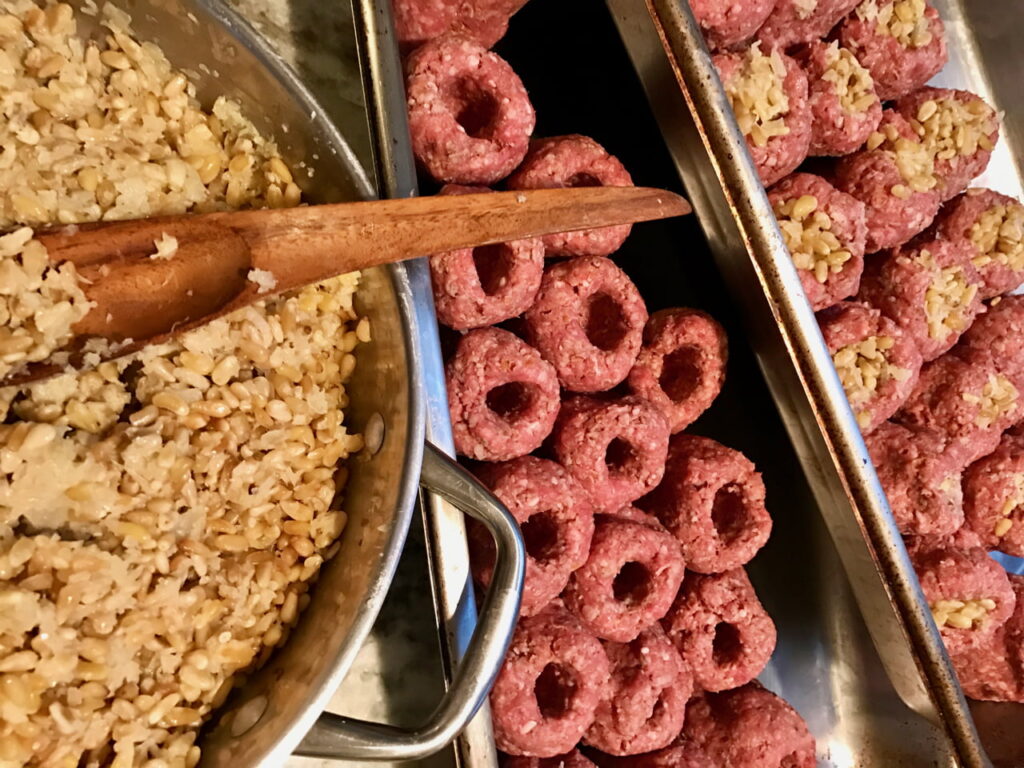
Traditional Middle Eastern Kibbeh Recipe

